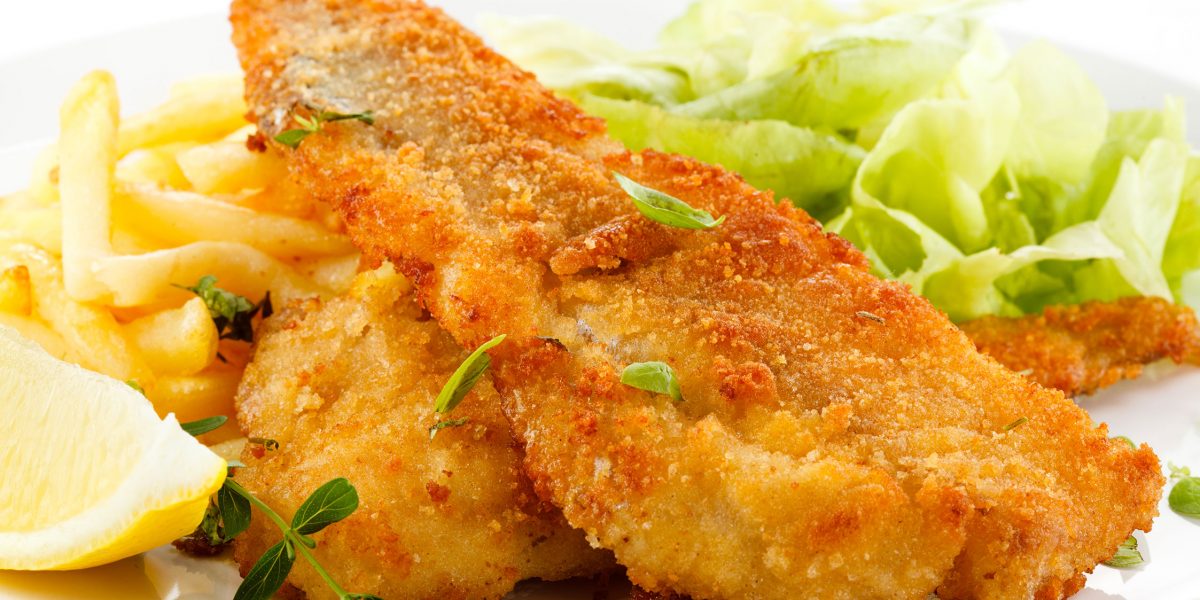
It’s a menu staple from local pubs to even upscale restaurants in the British Isles and beyond. It’s a menu item who’s name transcends local dialect and does not give way to the term “fries”. It’s an unmistakable term that has the power to inspire hunger with a single thought. It’s a hearty, tasty meal that leaves us wondering: where does this delicious salt and vinegar coated breaded and fried fish with a side of fried potatoes British signature dish come from?
A Side of Chips, Please
For a country that loves potatoes as much as British cuisine does, potatoes are not actually native to England, nor is the first fried potato in the form of what we now refer to as crisps or fries (depending on where you’re reading this from). We have Sir Walter Raleigh for introducing England to the potato in the 17th century, and the French for introducing us to an irresistible new way to cook them.
Potatoes, more specifically chips themselves, became increasing popular throughout England for their low price and tasty, hearty qualities. They were particularly popular in the colder, more industrial areas of England in the North in the late 18th and early 19th centuries. It was in Lancashire that this popularity really came to a peak.
The Main Course
While the north was chowing down on chips galore, the south of England had its own delicious concoction brewing. It’s commonly accepted that London’s East End is home to the art of the fried fish. Even Charles Dickens referenced this noteworthy trait of the East End in Oliver Twist, referring to an entire warehouse just for fried fish.
London’s contribution was soon married to the beloved Lancashire fried potato crisps and gave way to the soon to be wildly popular dish we now know and love: fish and chips. Fish and chips would soon thereafter become the national dish of England.
A Delicious Rivalry
With aspects of the dish coming from opposing ends of the country, there was sure to be some dispute. There are two shops that disagree about who opened the first fish and chips shop. The first was opened by a Mr Lees in Mossley, Lancashire in the mid 1860s. Mr Lees started his fish and chips shop in a small wooden market hut and later opened up a full fledged business specialising in the dish. Lees claimed to own the first fish and chip shop in the world.
Londoners disagreed. While Lees opened his shop around 1863, it is argued that Joseph Malin’s London based fish and chip shop opened on Cleveland Street in 1860. These early fish and chips shops were nothing more than front rooms of bussinessmen’s homes.
Who opened their shop and where first will be a dispute to last centuries. But what’s important that in a mere twenty or so years from the first rumored openings of fish and chips shops, such shops would go on to be commonplace throughout England and Great Britain alike.
Once steam power became available for sea trade, the dish continued to expand beyond the British lands and reached all across the North Atlantic. Now, we don’t have to wait in long queues or go to somebody’s living room to enjoy fish and chips. Chances are, there’s a shop selling them right around the corner from wherever you’re reading this from!
101 Reykjavik Street Food is a restaurant that prides itself by serving convenient and flavourful food for a reasonable price and its location in downtown Reykjavik makes it a very busy and popular local restaurant.
For more information, please visit the website at: www.101streetfood.is
Sep
2019



